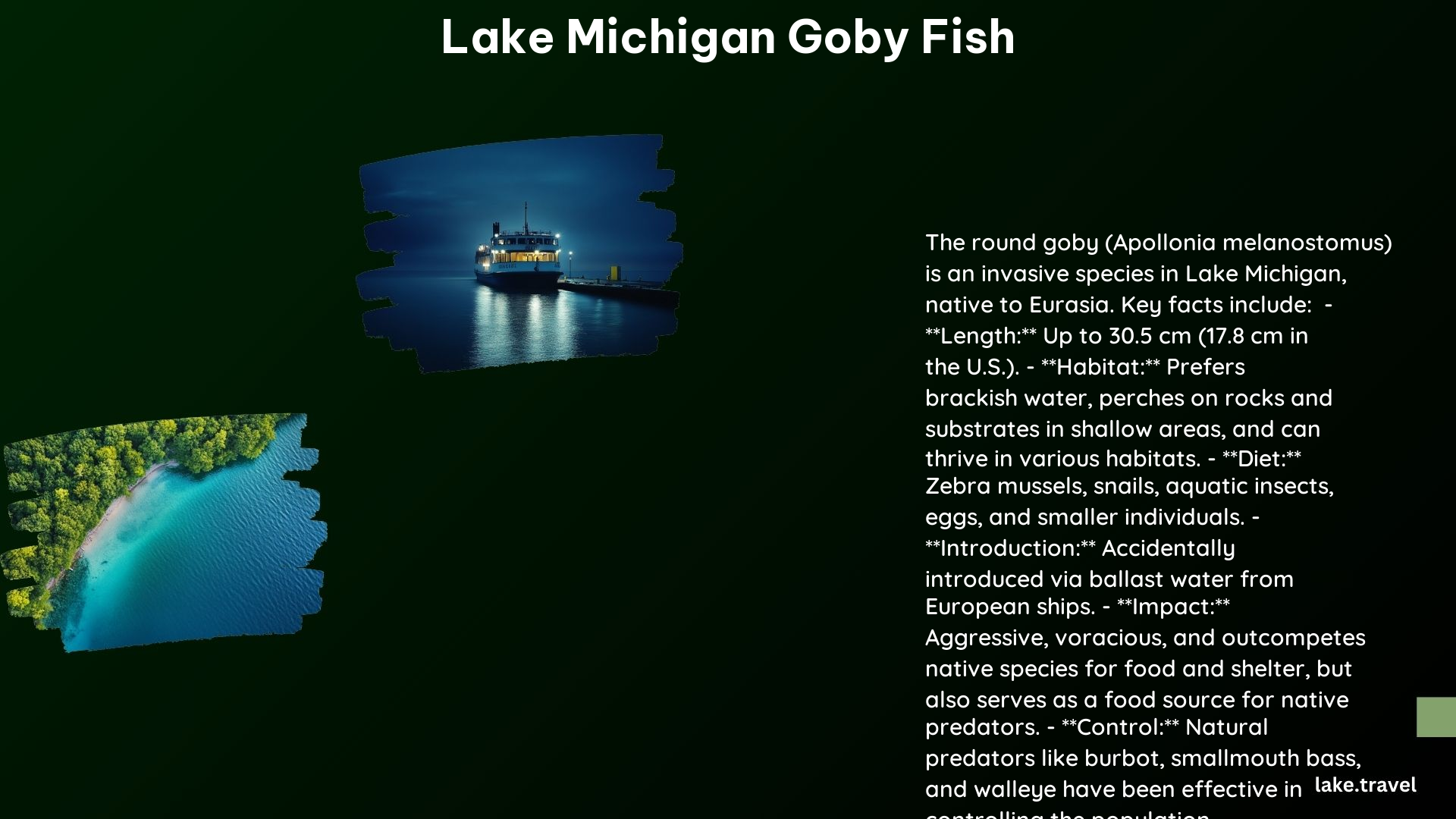The Round Goby (Apollonia melanostomus) is an invasive fish species that has made its way into Lake Michigan, posing a significant threat to the native ecosystem. As a native of the Black and Caspian Seas in Europe, the Round Goby was accidentally introduced into the Great Lakes through ballast water transfer in cargo ships. This blog post will explore the primary food sources, impact on native fish populations, and measures to control the spread of this invasive species in Lake Michigan.
Primary Food Sources of Round Gobies in Lake Michigan

Round gobies in Lake Michigan have a diverse diet, feeding on a variety of food sources:
- Zebra Mussels: As an opportunistic feeder, the Round Goby has found a reliable food source in the invasive zebra mussel, which is also present in the Great Lakes.
- Native Snails: In addition to zebra mussels, Round Gobies also consume native snail species, further disrupting the natural balance of the ecosystem.
- Aquatic Insects: Round Gobies supplement their diet with aquatic insects, adding to their diverse feeding habits.
- Eggs and Smaller Fish: These aggressive fish also prey on the eggs and smaller individuals of other fish species, including native fish populations.
Impact on Native Fish Populations in Lake Michigan

The introduction of the Round Goby has had a significant impact on the native fish populations in Lake Michigan:
- Competition for Food: Round Gobies directly compete with native fish species for the same food sources, leading to a decline in the populations of these native fish.
- Predation on Native Eggs: The Round Goby’s appetite for fish eggs has a detrimental effect on the reproductive success of larger native fish species.
- Aggressive Behavior: Round Gobies are known for their aggressive behavior, which can displace native species from their preferred habitats, further disrupting the natural ecosystem.
Measures to Control the Spread of Round Gobies in Lake Michigan
Efforts are underway to mitigate the impact of the Round Goby in Lake Michigan, and several measures have been implemented:
- Predatory Control: Native predators, such as burbot, smallmouth bass, rock bass, walleye, yellow perch, and brown trout, have been found to feed on Round Gobies, helping to control their population.
- Proper Disposal of Bait: Anglers are advised not to use Round Gobies as bait and to properly dispose of any caught gobies to prevent their spread to other waterways.
- Reporting and Monitoring: The Midwest Invasive Species Information Network (MISIN) provides a reporting tool for anglers to report Round Goby sightings, which helps to track their spread and inform management strategies.
Additional Facts about Round Gobies in Lake Michigan
- Size and Lifespan: Round Gobies can grow up to 30.5 cm (12 inches) in length and live for about 4 years.
- Habitat: These fish prefer brackish water conditions but can thrive in various habitats, including shallow areas with rocks and open sandy areas.
- Reproduction: Females can lay up to 3,800 eggs at a time, which are guarded by males until they hatch.
The Round Goby’s invasion of Lake Michigan has had a significant impact on the native ecosystem, and efforts are ongoing to control its spread and mitigate its effects. By understanding the primary food sources, impact on native fish populations, and measures to control the Round Goby, we can work towards preserving the natural balance of Lake Michigan’s aquatic life.
References:
– Midwest Invasive Species Information Network (MISIN)
– Michigan Department of Natural Resources
– Great Lakes Now
– Wikipedia
